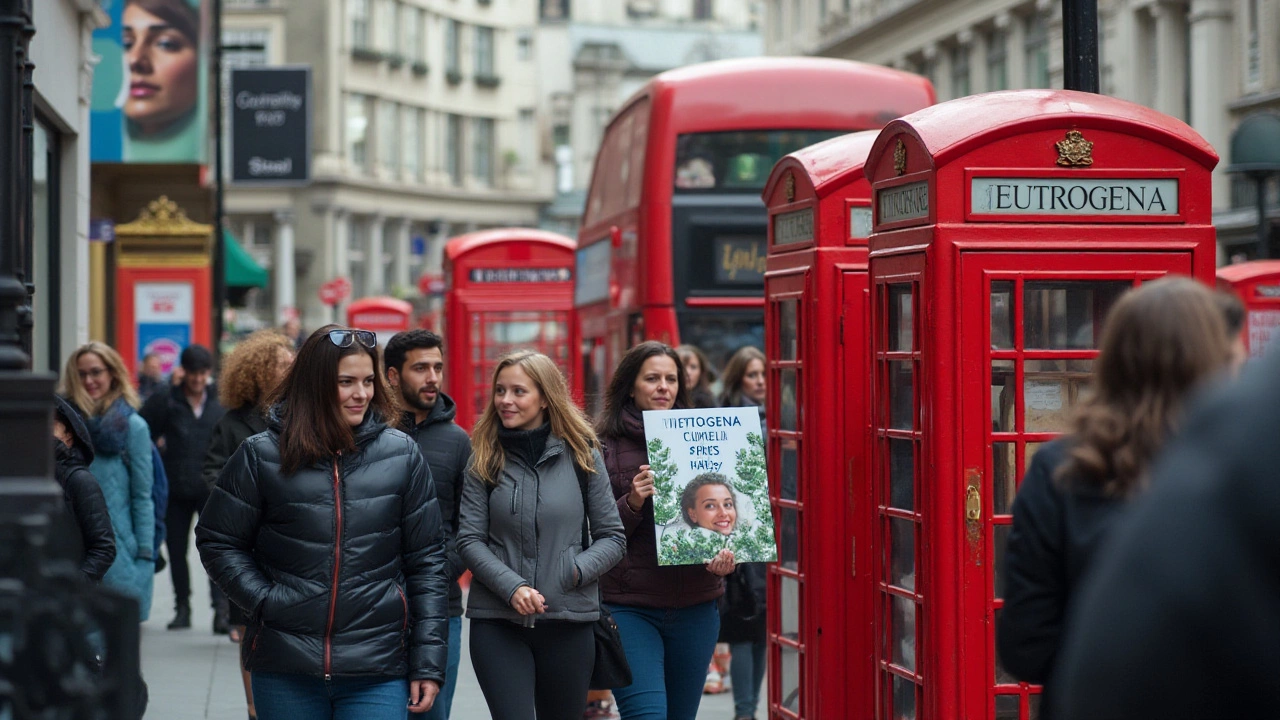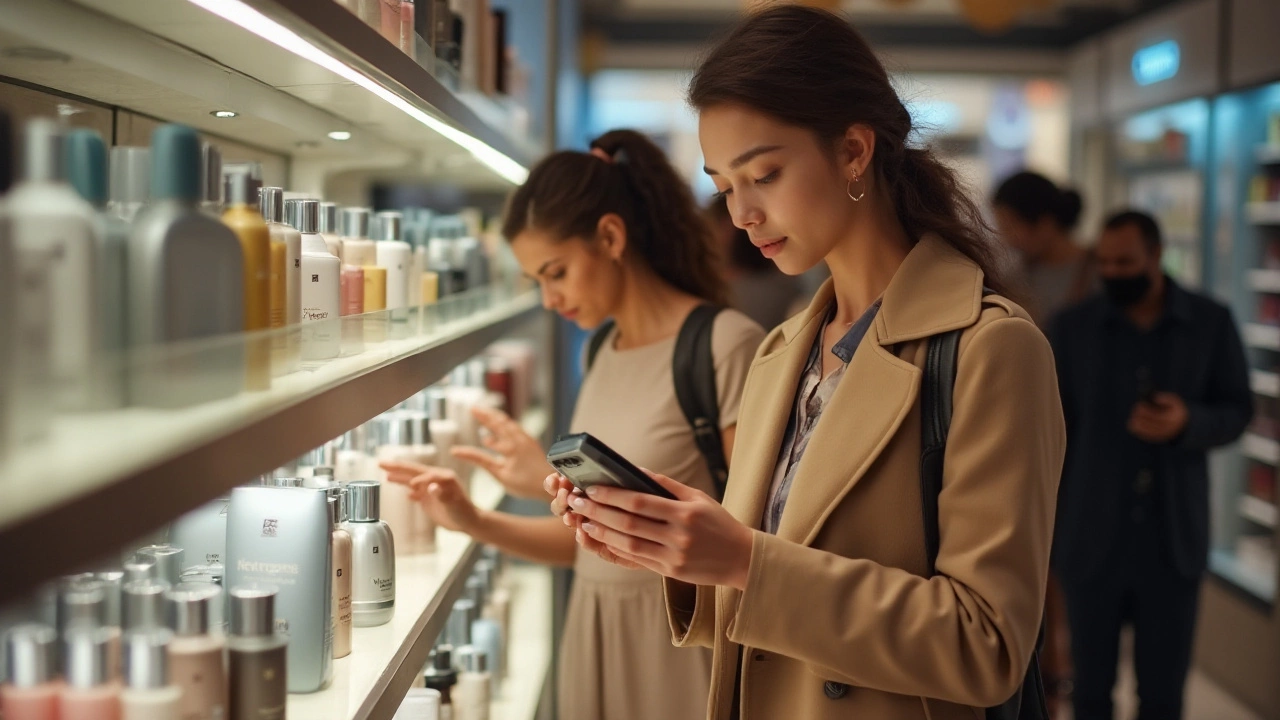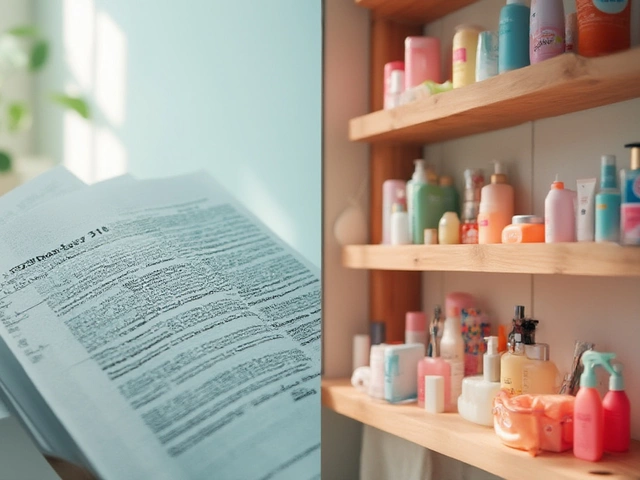In the modern world, where ethical consumerism is more than just a trend, the question of whether popular brands engage in animal testing has never been more relevant. Neutrogena, a household name in skincare and cosmetics, often finds itself in the crosshairs of this ethical debate.
Consumers are eager to know if the products they use come without the moral baggage of animal cruelty. This article takes you through Neutrogena's position on animal testing, giving you the information you need to align your purchasing decisions with your values. It's about knowing the practices behind that beloved facial cleanser or sunscreen and making informed choices.
- The definition of animal testing
- Neutrogena's official stance
- Country regulations affecting policies
- Understanding true cruelty-free certification
- Alternatives to animal testing
- Tips for finding cruelty-free products
The Definition of Animal Testing
Animal testing refers to the procedures performed on living animals for the purpose of research into biology and diseases, assessing the effectiveness of new medicinal products, and testing the safety of consumer products such as cosmetics. Historically, this method was crucial for understanding how substances interact with complex biological systems, which simply cannot be replicated with absolute accuracy in in vitro systems or computer models. However, this practice has come under scrutiny for ethical reasons as many argue about the moral implications of using animals for such tests. It’s important to understand that animal testing is not only about evaluating cosmetics for human use but it also extends to numerous fields, including pharmaceuticals and scientific research. The debate surrounding this method highlights the need for a balance between ethical considerations and scientific advances.
The different methods of animal testing can range from monitoring simple aspects of biology to complex processes that might or might not ultimately improve human health. Types might include toxicity testing, where animals are subjected to various chemical exposures to determine potential health risks, and efficacy testing, examining how well a substance works in a biological context. This can involve applying products to the skin, forced feeding, inhalation tests, or injection into the bodies of animals. The impact on the animals used in testing is diverse and can range from mild irritation to severe distress and even death, leading to growing advocacy for alternative methods. As public awareness grows, saying no to animal testing is gaining momentum, with people urging companies to reconsider their policies.
Globally, the situation around animal testing varies. Some countries have stringent regulations in place, while others still require it, particularly for safety testing to ensure public health. As of recent years, there has been a significant movement towards reducing animal testing; the European Union, for example, has taken a lead in banning animal testing for cosmetics. The EU's legislation demonstrates a progressive step that many hope other regions will adopt. Yet, regulations are not uniformly adopted, and this leads to complications for global brands which must navigate varying requirements. Recognizing the complexity involved, ethical consumers are increasingly choosing to support products that are verified as cruelty-free, a certification indicating a brand's commitment to avoiding animal testing at all stages of product development. This is crucial for brands like Neutrogena as they navigate these intricate global stipulations.
Increasingly, alternative methods are being developed and embraced. Innovations such as advanced computer modeling, in vitro testing using human cell cultures, and even 'organ-on-a-chip' technology offer promising possibilities. These methods promise not only to be more humane but often more reliable, providing better predictive results for human responses. These alternatives are gaining traction and acceptance across the industry. Cruelty-free advocates argue that the time has come to embrace these technologies. According to the National Anti-Vivisection Society, "90% of drugs fail in human trials despite promising results in animal tests," shedding light on the necessity to transition towards these emerging methodologies.
Neutrogena's Official Stance
Neutrogena, a key player in the beauty industry, has often faced questions about its practices regarding animal testing. Many consumers have long held the assumption that due to Neutrogena's presence in various international markets, their policies might not align with cruelty-free standards. However, navigating this complex issue involves understanding not only the brand's official statements but also the regulatory environments that they operate within. Neutrogena publicly states that it does not conduct animal testing on its products, except when required by law. This important caveat means that while the brand itself avoids such practices, their products sold in countries with mandatory animal testing policies might not be exempt from these requirements.
Interestingly, this stance means Neutrogena aligns with certain regulations in countries like China, where pre-market animal testing is required. In recent years, there have been shifts in Chinese regulations allowing some cosmetics, particularly those manufactured domestically, to avoid such testing if they fulfill certain criteria. Despite that, brands like Neutrogena continue to wrestle with these complexities, maintaining their commitment to avoiding animal testing where possible.
It's crucial to note that a brand claiming not to test on animals doesn't automatically make it cruelty-free. Cruelty-free certification requires transparency across the entire production process, from raw materials to the final product on the store shelf. Neutrogena has not been officially certified by Leaping Bunny or PETA, two of the most respected organizations that offer certifications for cruelty-free brands. These organizations require companies to undergo thorough vetting to ensure adherence to anti-animal-testing policies.
In recent years, we've seen a gradual shift with big brands and consumers alike moving towards more ethical practices. While Neutrogena makes strides with initiatives such as sourcing sustainable ingredients and improving product transparency, the lack of a quintessential cruelty-free certification leaves some consumers unsatisfied. For many, the call for beauty without cruelty remains a pressing priority, pushing such brands towards complete accountability. Has Neutrogena's stance changed? As of now, it remains consistently vital for consumers to check updated resources and verify any claims as shifts in policies occur frequently.
To better understand industry trends, let's look at some data regarding consumer preferences and cruelty-free demands:
| Year | Market Share of Cruelty-Free Products |
|---|---|
| 2021 | 23% |
| 2023 | 29% |
| 2025 (projected) | 35% |
"The global demand for cruelty-free beauty products continues to rise as consumers make ethical choices about the brands they support." - Sarah Thompson, Beauty Market Analyst
In summary, Neutrogena's stance on animal testing paints a complex picture that reflects evolving market conditions and regulatory landscapes. By maintaining an awareness of brands' policies and the shifting global context, consumers can make informed decisions that align with their ethical values.

Country Regulations Affecting Policies
When discussing whether Neutrogena engages in animal testing, understanding country-specific regulations is essential. Various countries have different laws that either permit or ban the practice of testing cosmetics on animals. For instance, the European Union implemented a comprehensive ban on animal-tested cosmetics in 2013, which means products sold in the EU must not involve animal testing at any stage. This regulation poses a significant challenge for companies accustomed to traditional methods, encouraging them to invest in alternative testing methods.
In contrast, China has historically required imported cosmetics to be tested on animals to validate safety, creating a regulatory environment that makes it difficult for global brands like Neutrogena to claim a truly cruelty-free status. This regulation has been a topic of much debate and has prompted many brands to reconsider their market strategies. However, significant regulatory changes in China have been on the horizon, with efforts to reduce animal testing and encourage alternative methods.
As of recent updates, China has been working towards accepting non-animal test data under certain conditions for imported non-special use cosmetics. These changes signal a gradual shift in policy, though full alignment with cruelty-free standards is yet to be achieved. Meanwhile, Neutrogena, like many other brands, must navigate these complex regulations to maintain a presence in international markets while addressing ethical concerns of their global customers.
An interesting development is that in 2021, China made amendments allowing certain cosmetics to be exempt from animal testing if they meet specific criteria, including GMP certification and safety assessments. However, this shift doesn’t necessarily apply to all products nor does it cover domestic special-use cosmetics. This underscores ongoing challenges and the need for brands to continually adapt to regulatory landscapes across regions.
It's also noteworthy that the United States does not possess federal laws banning animal testing for cosmetics. While some states, such as California and Illinois, have enacted their own bans, the federal framework remains open to animal testing across numerous sectors, including skincare and cosmetics. The disparity in regulations between countries and even within countries highlights the challenges for brands aiming for universally accepted cruelty-free certification.
"No longer should these archaic forms of testing accompany our lipstick and mascara purchases. Our consumer demands are changing, and so must the producers."Regulatory dynamics and consumer advocacy are inexorably linked, with increasing pressure from consumers driving legislative change gradually around the world, reminding us how critical it is for companies like Neutrogena to stay nimble and responsive in their markets.
To sum up, the challenge for brands like Neutrogena lies in balancing consumer expectations with global regulatory requirements. As countries like China begin to relax their stance on animal testing, there is potential for major shifts in how international brands operate. This growing alignment with cruelty-free paradigms presents both an opportunity and a challenge for global cosmetic giants to demonstrate commitment to ethical practices without compromising on business opportunities across diverse markets.
Understanding True Cruelty-Free Certification
Diving into the world of cruelty-free certifications can feel overwhelming, but understanding them is crucial in navigating the ethical landscape of skincare and products like those from Neutrogena. Certifications serve as a beacon of trust, ensuring that products claiming to be cruelty-free truly adhere to the principles of humane and ethical product development.
Firstly, it’s vital to recognize the key organizations that provide these certifications. The Leaping Bunny Program, operated by the Coalition for Consumer Information on Cosmetics (CCIC), is one of the gold standards for cruelty-free verification. Their rigorous vetting ensures no animal testing during every stage of production. The program requires companies to periodically reapply, providing ongoing assurance.Cruelty-Free International's Leaping Bunny logo is globally recognizable and offers the highest level of cruelty-free assurance.
An important aspect to consider is that some regions, such as the EU, have legal bans on animal testing for cosmetics. However, regulations can vary widely across countries. For example, China has historically required all imported cosmetics to be tested on animals although recent changes have seen some exemptions. This variation complicates the landscape for brands wishing to maintain clear and consistent cruelty-free credentials.
"Consumers increasingly demand cruelty-free cosmetics, and companies must adapt to these ethical standards," notes Dr. Jane Goodall from the Goodall Institute.
Understanding the nuances of cruelty-free certification includes recognizing the difference between brands that do not test on animals and those that are truly cruelty-free. True cruelty-free status encompasses product development, ingredient sourcing, and even supplier policies. It’s a comprehensive commitment that must be examined transparently. Brands like Neutrogena often end up in discussions regarding their policies, but clarity comes from certification details and consistent policy application across markets.
To better visualize the certification landscape, consider this simple table outlining key certifiers and their specific standards:
| Certifier | Criteria |
|---|---|
| Leaping Bunny | No animal testing at any product development stage, strict supply chain monitoring. |
| PETA's Beauty Without Bunnies | Company pledge to reject animal testing but less stringent supply chain checks. |
For consumers who seek to live by their ethical standards, knowing how to identify truly cruelty-free products is essential. Always look for certified logos, review brand policies for transparency, and keep abreast of regulatory changes that might impact their cruelty-free status. This ensures connoisseurs of beauty and skincare not only rely on the allure of shimmering powders and silky creams but maintain alignment with their values—a rewarding endeavor for both the soul and the skin.

Alternatives to Animal Testing
When it comes to creating skincare and cosmetic products, finding effective and humane alternatives to traditional animal testing methods has become crucial. With advancements in science, brands like Neutrogena can explore a multitude of innovative testing strategies that are both ethical and efficient. These alternatives not only ensure safety for consumers but also align with a broader cultural shift towards cruelty-free practices. Encouragingly, many reputable organizations and scientists are at the forefront of this transformation, promoting research and development that respects animal rights.
One of the most promising technologies being utilized is in-vitro testing. This approach involves using human cell cultures grown in laboratories to mimic real human skin responses. Unlike the archaic methods that rely on live animals, in-vitro testing allows scientists to observe how products interact with human biology in a controlled environment, offering specific insights without the ethical concerns. The potential of in-vitro testing is vast and continually expanding, as it can help predict things like skin irritation and allergic reactions before products hit the market. This is just one example of how science is improving the industry while offering cruelty-free insights.
Digitally, the realm of computer modeling is also making headway as a viable alternative. Predictive analytics and sophisticated algorithms can simulate human reactions to various chemicals, providing essential data for product safety without the need for animal suffering. Computational models utilize existing biological data to predict toxicological effects, enhancing the decision-making process for researchers. The accuracy of these models is improving each year, making it possible to anticipate product reactions in a detailed manner. Studies show that combining these digital tools with other non-animal methods can lead to enhanced consumer safety and ethical product development.
Moreover, fostering a collaborative environment is key to advancing animal-testing alternatives. Partnerships between brands, governments, and research institutions are essential in sharing knowledge and resources. A spectacular example is the European Union’s funding towards the development of new testing technologies that are both cruelty-free and reliable. Such collaborations ensure that innovations are quickly integrated into the product development process, minimizing the need for animal research globally.
Beyond new methods, it is important to address existing regulatory hurdles that may still mandate animal testing. Engaging in dialogue with regulators worldwide to align on new standards that recognize and endorse these humane methodologies is pivotal. A holistic approach involving consumer awareness, industry commitment, and political backing can indeed reshape policies, paving the way for a completely cruelty-free era in skincare and cosmetics.
"Science and technology can achieve greatness when directed towards compassionate ends. With collective efforts, we are edging closer to a future where animal testing is history." – Dr. Jane Goodall, renowned primatologist and anthropologist.
To support these alternatives, consumers can play a role by choosing products that commit to such humane methods. Recognizing and supporting brands that invest in modern science-driven testing rather than outdated animal models can significantly influence market trends. With voices demanding ethical shifts, the pressure mounts for companies to embrace compassion over tradition. Ultimately, these alternatives not only protect animals but also advance human health, as they offer more precise, tailored, and relevant findings for human skin applications, forging a path towards innovation with integrity.
Tips for Finding Cruelty-Free Products
Shopping for cruelty-free products can sometimes feel like navigating a never-ending labyrinth, where every turn seems to demand deeper research and verification. But for those determined to stand by ethical choices, understanding how to spot truly cruelty-free items is essential. The journey begins by recognizing trusted cruelty-free certifications such as those from Leaping Bunny or PETA, which rigorously vet companies to ensure their practices align with cruelty-free standards. These logos on packaging are more than just pretty designs; they symbolize a brand's commitment to avoiding animal testing at all stages of production.
Moreover, staying informed about brands can make a world of difference. Companies often update their policies based on changing regulations or public pressure; this means what was true yesterday might no longer be valid today. This dynamic nature calls for vigilance in staying up-to-date with cruelty-free lists that various animal rights organizations provide. Sometimes, signing up for newsletters from these organizations can be a great way to keep your finger on the pulse of ethical beauty.
Another proactive step is to directly contact brands. Many label policies can sound confusing due to legal jargon, so asking for a straightforward confirmation can help. Emails or social media messages often garner responses, clarifying if their Neutrogena and other selections are genuinely free from animal testing. Plus, your inquiry sends a powerful signal that consumers care about this issue, encouraging brands to maintain transparency and accountability.
When shopping online, utilizing cruelty-free databases is invaluable. Websites like Logical Harmony and Cruelty-Free Kitty offer meticulously curated lists of brands and products. These resources are built on extensive research, often providing clear breakdowns of companies that might be owned by parent companies involved in animal testing. This comprehensive insight helps in making choices that align with personal ethics.
Paul Shapiro, author of "Clean Meat," once said, "The world is changing, and our ethical considerations must change with it." His insight resonates deeply, especially in the beauty industry, as consumers demand more transparency and ethical production methods.
Don't underestimate the power of social media. Following influencers who specialize in cruelty-free beauty can introduce you to new products and trusted brands. These influencers not only provide honest reviews but often share their journey towards an ethical lifestyle, making it easier for you to find reliable recommendations.
Lastly, for those who are inclined towards numbers, consider the stats behind cruelty-free certifications. A recent survey by the Humane Society International showed that nearly 74% of respondents preferred purchasing cosmetics from brands that eschew animal testing. This statistic underscores the growing consumer base that values ethical practices, pushing more brands to rethink their testing methods.


